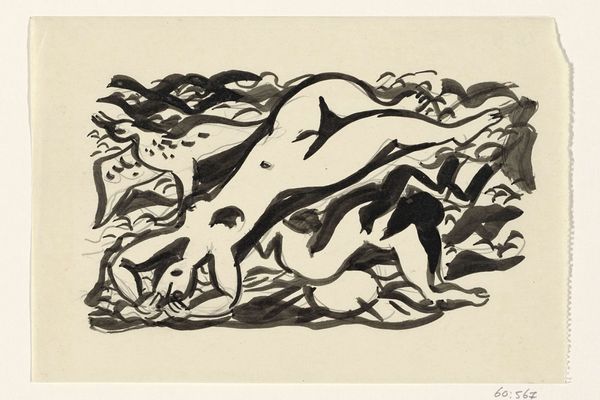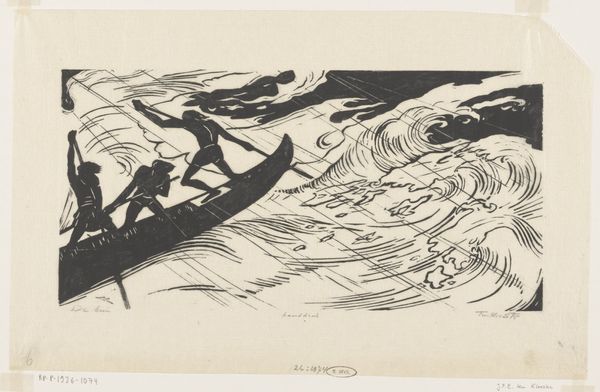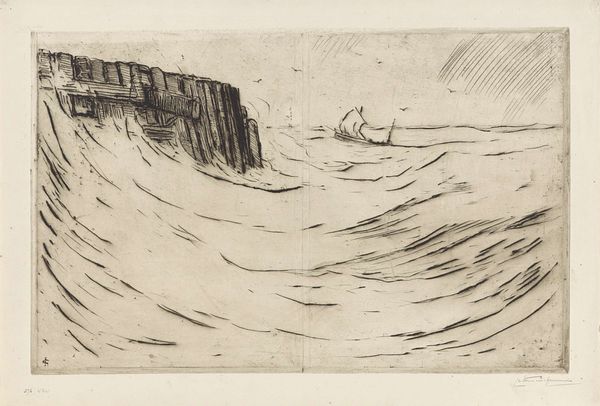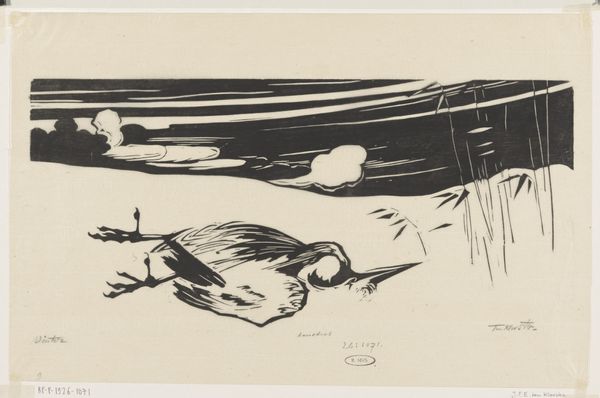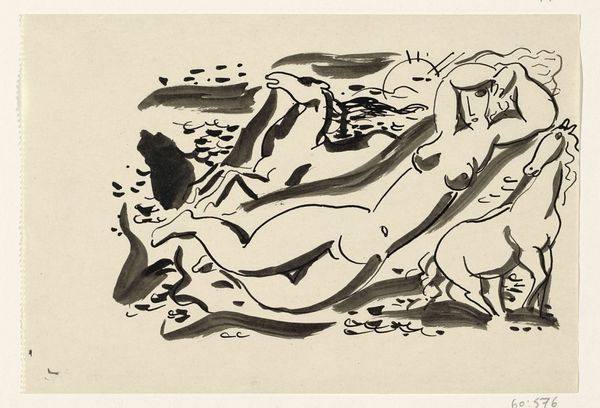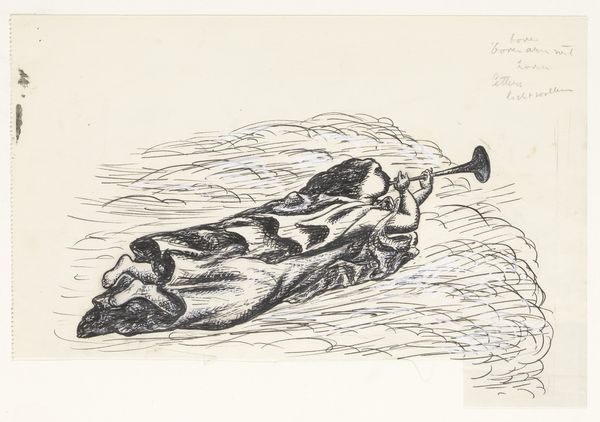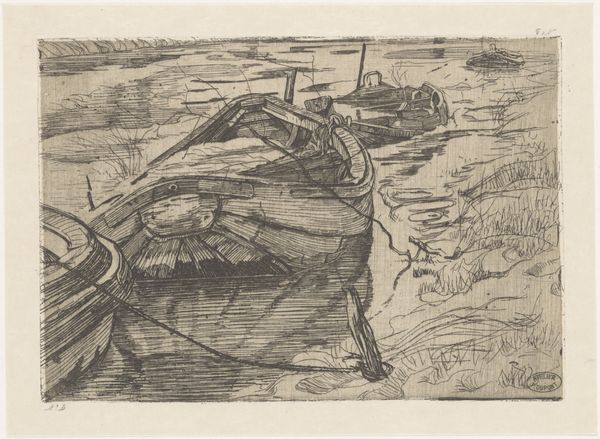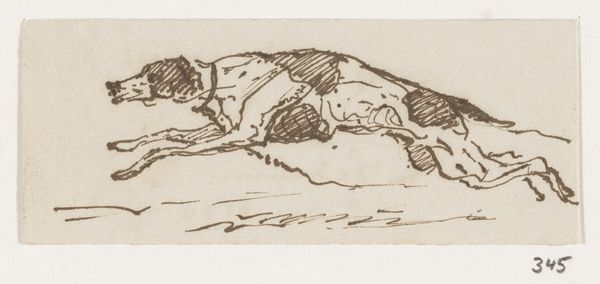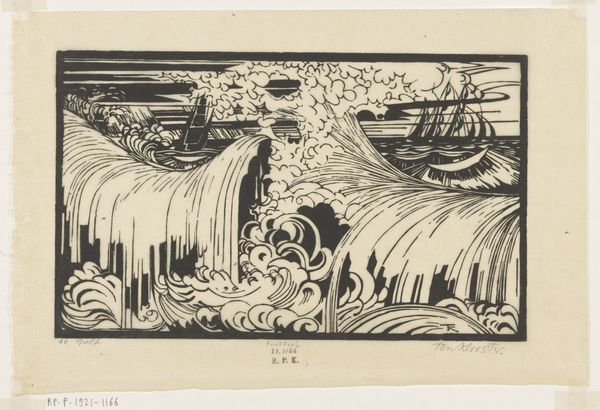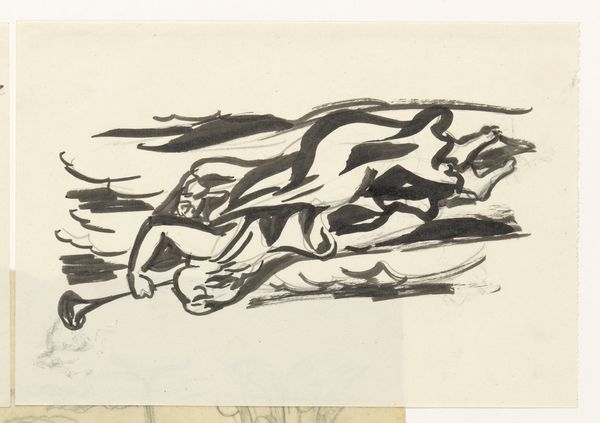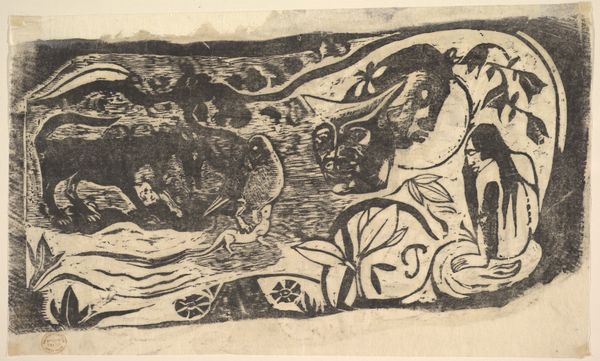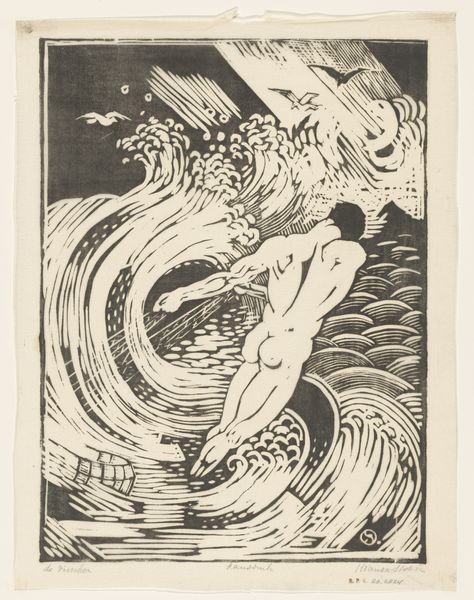
drawing, paper, ink
#
drawing
#
landscape
#
caricature
#
figuration
#
paper
#
ink
Dimensions: height 103 mm, width 151 mm
Copyright: Rijks Museum: Open Domain
Curator: Leo Gestel's drawing, "Seagull and Steamship at Sea," likely created sometime between 1891 and 1941. It is executed in ink on paper. What are your first impressions? Editor: Bold! Stark. The high contrast between the black ink and the paper definitely gives it an almost woodcut feel, despite the medium. There’s a powerful graphic quality to the strokes depicting the water. Curator: It does feel rather graphic. Notice how the image simplifies both nature and machine; the steamship almost feels secondary to the powerful wings of the seagull, its presence evoking themes of freedom versus industrialization. Editor: Absolutely. I wonder about the kind of paper used here. You see slight variations in the ink density which points to a certain absorbency; the final texture is very distinct. Also, considering the time, the mass production of paper, as opposed to handmade, could say a lot about the changing nature of art accessibility. Curator: Interesting point about accessibility. To me, this starkness lends itself to a feeling of the sea as indifferent to human progress, evoking a vast and sublime confrontation with nature. The bird, rendered almost as a caricature, might signify the soul, or a connection to an older, more spiritual world disrupted by the industrial revolution symbolized by that very solid steamship. Editor: Perhaps. Or perhaps the artist's access to commercially available ink impacted the deliberate style and overall thematic construction we interpret today. It's interesting to consider how everyday materials affect grand visions! The thickness of the lines feels intentional; that's a deliberate choice made easier because mass manufacturing offered wider markers than traditional quills. Curator: I see what you're getting at, in terms of materiality guiding perception, while I also feel that the artist is drawing from a deeper well, into an ocean of symbols around nature and the impacts of modernity. It’s such a dynamic conversation between symbolism and the materials in use. Editor: Definitely food for thought. Thinking of the constraints of materials in shaping cultural forms... Curator: Absolutely!
Comments
No comments
Be the first to comment and join the conversation on the ultimate creative platform.
